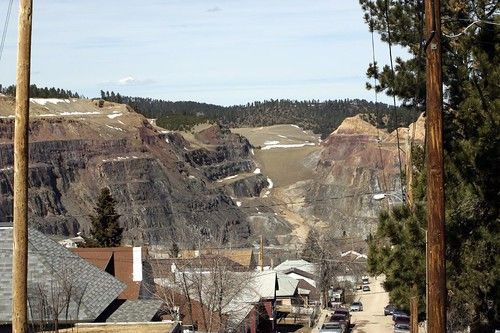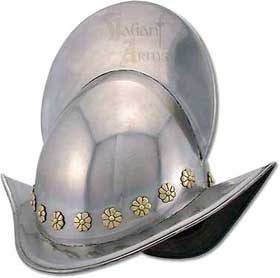Oroblanco
Gold Member
- Joined
- Jan 21, 2005
- Messages
- 7,841
- Reaction score
- 9,876
- Golden Thread
- 0
- Location
- DAKOTA TERRITORY
- Detector(s) used
- Tesoro Lobo Supertraq, (95%) Garrett Scorpion (5%)
- #1
Thread Owner
Jesuit Father DeSmet's Secret Gold Mine in the Black Hills
The Secret Gold Mine of Father DeSmet
"The following story, copied from the St. Louis Globe- Democrat, go to show how advantage was taken of the authority of Father DeSmet: "Early in the '60's, at a dinner given Father DeSmet, the celebrated Indian missionary, at the St. Louis University, Barney Caulfield, late member of Congress from Chicago, happened to be one of the guests entertained at the dinner. This was long before the Black Hill gold fever broke out, but the conversation turning upon the rich mineral deposits of the country, Father DeSmet, who had been in the wildest portion of the West during his missionary work, related how he had discovered most extraordinary gold deposits in the Black Hill country while digging into a mountain, and said that after finding the precious ore he had again carefully covered it up. Those present at the table used eveay effort to induce him to locate his wonderful find, but he firmly declined to do so, giving as his reason that he did not wish his children (the Indians) to be disturbed. Although repeatedly urged to do so, Father DeSmet never divulged the secret.
"When the Black Hill fever took so many miners to Dead- wood, immense deposits of gold ore were discovered around Deadwood and Central, one of the prospectors found what he believed the identical mine of which Father DeSmet had spoken. The news went back to St. Louis, and the capitalists were excited. Hon. B. Caulfield proceeded to Deadwood, secured an option on the mine at low and favorable figures, and brought the same to St. Louis. This option he shared with Judge J. C. Normile, who in turn took into the syndicate Erastus Wells, Edwin Harrison, the Locker Brothers, then in the banking business, L. M. Rumsey, H. L. Dousman and S. C. Gaty. The money was all raised and deposited in the bank, save the subscription of Mr. Gaty. This gentleman very mysteriously withheld his share of the fund, promising to pay from day to day, all the time urgently requesting that he be permitted to continue in the syndicate. There was another gentleman ready and eager to take his place, but at his own solicitation Mr. Gaty was kept in.
" Time swept by, and it was getting uncomfortably close to the date when the money must be in Deadwood to reap the benefit of the option of the mine, and still Mr. Gaty's subscription was not forthcoming. At last Judge Normile, seeing the danger of losing the prize, had Mr. Gaty's name struck off, and permitted H. L. Dousman to double his subscription, and Mr. Wm. Locker then started for Dead- wood to close the deal. Under ordinary circumstances he could have made the journey in ample time, with forty- eight hours to spare. It was early in November when he started, and as ill-luck would have it, a severe snowstorm set in, unusually early for that region, and Mr. Locker was detained between Cheyenne and Deadwood until thirty hours after the option had expired. The value of the property had been raised abroad and a syndicate of wealthy Californians had sent representatives to Deadwood to secure the prize if possible. They made an offer largely in advance of the price which the St. Louis party had the option to purchase and the Californians anxiously awaited the action of the St. Louis syndicate.
" All of the last day that the option held good representatives of the California party were at the Deadwood bauk and others at the stage office scanning the horizon and hoping that the St. Louisans would not put in an appearance, yet fearing that they might. It was a day of intense excitement to them, as they afterwards acknowledged, and when the sun sank below the western horizon and the St. Louisans came not the hearts of the Californians were gladdened. They immediately closed the contract at double the figure at which the mine could have been secured by the St. Louis syndicate, paid the cash, and the prize was theirs.
" By this unfortunate delay the St. Louis party lost perhaps the richest mine in America! When the Californians secured it they immediately stocked it for ten millions of dollars."
So far the story. The price paid was $400,000 and today the mill which was to reduce the inexhaustible body of ore, is running continuously upon ore taken from the Deadwood-Terry mines owned by the Homestake Company."
<from PahaSapa, or The Black Hills of South Dakota: A Complete History of the Gold and Wonder-land of the Dakotas, from the Remotest Date Up to the Present ...By Peter Rosen
Published by Nixon-Jones Print. Co., 1895>

<Homestake gold mine, SD>
So what do you think - was the secret gold mine of Father DeSmet one and the same with the Homestake? The Homestake mine was not known for very rich ore, rather it was of a somewhat low-grade, but large in volume. Could the original gold vein found by Father DeSmet still remain un-discovered, somewhere in the Black Hills? Thank you in advance,
Oroblanco
The Secret Gold Mine of Father DeSmet
"The following story, copied from the St. Louis Globe- Democrat, go to show how advantage was taken of the authority of Father DeSmet: "Early in the '60's, at a dinner given Father DeSmet, the celebrated Indian missionary, at the St. Louis University, Barney Caulfield, late member of Congress from Chicago, happened to be one of the guests entertained at the dinner. This was long before the Black Hill gold fever broke out, but the conversation turning upon the rich mineral deposits of the country, Father DeSmet, who had been in the wildest portion of the West during his missionary work, related how he had discovered most extraordinary gold deposits in the Black Hill country while digging into a mountain, and said that after finding the precious ore he had again carefully covered it up. Those present at the table used eveay effort to induce him to locate his wonderful find, but he firmly declined to do so, giving as his reason that he did not wish his children (the Indians) to be disturbed. Although repeatedly urged to do so, Father DeSmet never divulged the secret.
"When the Black Hill fever took so many miners to Dead- wood, immense deposits of gold ore were discovered around Deadwood and Central, one of the prospectors found what he believed the identical mine of which Father DeSmet had spoken. The news went back to St. Louis, and the capitalists were excited. Hon. B. Caulfield proceeded to Deadwood, secured an option on the mine at low and favorable figures, and brought the same to St. Louis. This option he shared with Judge J. C. Normile, who in turn took into the syndicate Erastus Wells, Edwin Harrison, the Locker Brothers, then in the banking business, L. M. Rumsey, H. L. Dousman and S. C. Gaty. The money was all raised and deposited in the bank, save the subscription of Mr. Gaty. This gentleman very mysteriously withheld his share of the fund, promising to pay from day to day, all the time urgently requesting that he be permitted to continue in the syndicate. There was another gentleman ready and eager to take his place, but at his own solicitation Mr. Gaty was kept in.
" Time swept by, and it was getting uncomfortably close to the date when the money must be in Deadwood to reap the benefit of the option of the mine, and still Mr. Gaty's subscription was not forthcoming. At last Judge Normile, seeing the danger of losing the prize, had Mr. Gaty's name struck off, and permitted H. L. Dousman to double his subscription, and Mr. Wm. Locker then started for Dead- wood to close the deal. Under ordinary circumstances he could have made the journey in ample time, with forty- eight hours to spare. It was early in November when he started, and as ill-luck would have it, a severe snowstorm set in, unusually early for that region, and Mr. Locker was detained between Cheyenne and Deadwood until thirty hours after the option had expired. The value of the property had been raised abroad and a syndicate of wealthy Californians had sent representatives to Deadwood to secure the prize if possible. They made an offer largely in advance of the price which the St. Louis party had the option to purchase and the Californians anxiously awaited the action of the St. Louis syndicate.
" All of the last day that the option held good representatives of the California party were at the Deadwood bauk and others at the stage office scanning the horizon and hoping that the St. Louisans would not put in an appearance, yet fearing that they might. It was a day of intense excitement to them, as they afterwards acknowledged, and when the sun sank below the western horizon and the St. Louisans came not the hearts of the Californians were gladdened. They immediately closed the contract at double the figure at which the mine could have been secured by the St. Louis syndicate, paid the cash, and the prize was theirs.
" By this unfortunate delay the St. Louis party lost perhaps the richest mine in America! When the Californians secured it they immediately stocked it for ten millions of dollars."
So far the story. The price paid was $400,000 and today the mill which was to reduce the inexhaustible body of ore, is running continuously upon ore taken from the Deadwood-Terry mines owned by the Homestake Company."
<from PahaSapa, or The Black Hills of South Dakota: A Complete History of the Gold and Wonder-land of the Dakotas, from the Remotest Date Up to the Present ...By Peter Rosen
Published by Nixon-Jones Print. Co., 1895>

<Homestake gold mine, SD>
So what do you think - was the secret gold mine of Father DeSmet one and the same with the Homestake? The Homestake mine was not known for very rich ore, rather it was of a somewhat low-grade, but large in volume. Could the original gold vein found by Father DeSmet still remain un-discovered, somewhere in the Black Hills? Thank you in advance,
Oroblanco









 - it completely slipped that I wanted to point out - most of the versions of Father DeSmet's discovery of gold have been what we would call PLACER - not a vein of gold in host rock, but loose gold - as in "gold nuggets" they cast for bullets, or "gold sand" filling the cracks of the rock, or the bed of a torrent. Based on DeSmet's own letters, I tend to think it was likely placer, but can't rule out lode gold just yet. This is my second point of issue (negative) with identifying the Homestake mine with Father DeSmet's gold.
- it completely slipped that I wanted to point out - most of the versions of Father DeSmet's discovery of gold have been what we would call PLACER - not a vein of gold in host rock, but loose gold - as in "gold nuggets" they cast for bullets, or "gold sand" filling the cracks of the rock, or the bed of a torrent. Based on DeSmet's own letters, I tend to think it was likely placer, but can't rule out lode gold just yet. This is my second point of issue (negative) with identifying the Homestake mine with Father DeSmet's gold.





